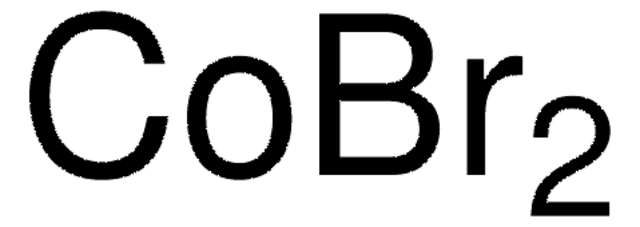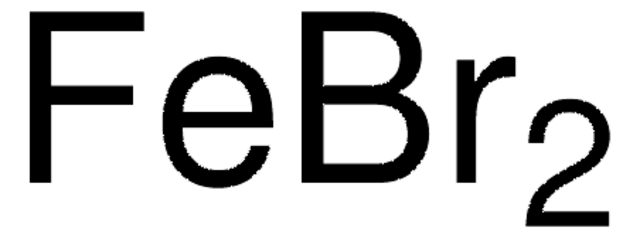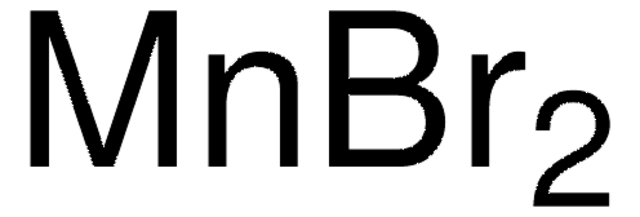334022
Cobalt(II) bromide
99%
Synonym(s):
Cobaltous bromide, Dibromocobalt
About This Item
Recommended Products
Quality Level
Assay
99%
form
powder
mp
678 °C (lit.)
solubility
acetone: soluble(lit.)
ethanol: soluble(lit.)
methanol: soluble(lit.)
density
4.909 g/mL at 25 °C (lit.)
application(s)
battery manufacturing
SMILES string
Br[Co]Br
InChI
1S/2BrH.Co/h2*1H;/q;;+2/p-2
InChI key
BZRRQSJJPUGBAA-UHFFFAOYSA-L
Looking for similar products? Visit Product Comparison Guide
Application
- Synthesis, crystal structure and thermal properties of dibromidobis (2-methylpyridine N-oxide-κO) cobalt (II): This study provides insights into the crystal structure and thermal properties of a cobalt(II) bromide complex, highlighting its potential applications in materials science (Näther & Jess, 2024).
- Coordination complexes of isoquinoline with cobalt and nickel halides: The study describes the formation of coordination complexes using cobalt(II) bromide with isoquinoline, which could be used for further exploration in coordination chemistry (Bellerive et al., 2024).
Signal Word
Danger
Hazard Statements
Precautionary Statements
Hazard Classifications
Acute Tox. 4 Oral - Aquatic Acute 1 - Aquatic Chronic 1 - Carc. 1B - Muta. 2 - Resp. Sens. 1 - Skin Sens. 1
Storage Class Code
6.1C - Combustible acute toxic Cat.3 / toxic compounds or compounds which causing chronic effects
WGK
WGK 3
Flash Point(F)
Not applicable
Flash Point(C)
Not applicable
Choose from one of the most recent versions:
Already Own This Product?
Find documentation for the products that you have recently purchased in the Document Library.
Customers Also Viewed
Articles
Lithium-Ion Battery Performance: Dependence on Material Synthesis and Post‑Treatment Methods
We presents an article about a micro review of reversible addition/fragmentation chain transfer (RAFT) polymerization. RAFT (Reversible Addition/Fragmentation Chain Transfer) polymerization is a reversible deactivation radical polymerization (RDRP) and one of the more versatile methods for providing living characteristics to radical polymerization.
Tools for Performing ATRP
Applying ARGET ATRP to the Growth of Polymer Brush Thin Films by Surface-initiated Polymerization
Protocols
We presents an article featuring procedures that describe polymerization of methyl methacrylate and vinyl acetate homopolymers and a block copolymer as performed by researchers at CSIRO.
Sigma-Aldrich presents an article about RAFT, or Reversible Addition/Fragmentation Chain Transfer, which is a form of living radical polymerization.
Sigma-Aldrich presents an article about the typical procedures for polymerizing via ATRP, which demonstrates that in the following two procedures describe two ATRP polymerization reactions as performed by Prof. Dave Hadddleton′s research group at the University of Warwick.
Our team of scientists has experience in all areas of research including Life Science, Material Science, Chemical Synthesis, Chromatography, Analytical and many others.
Contact Technical Service














